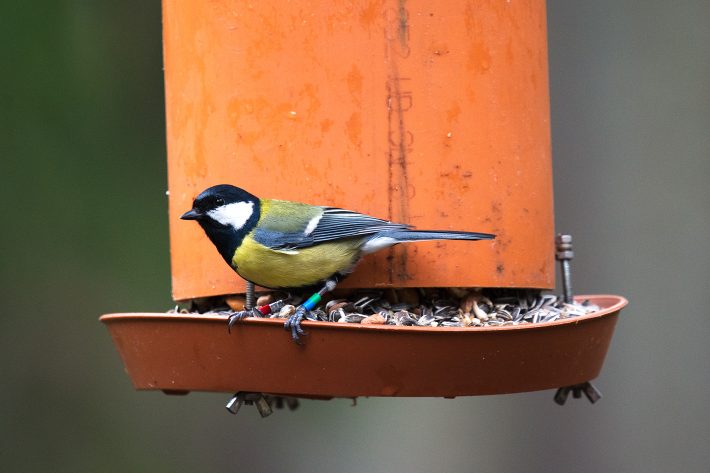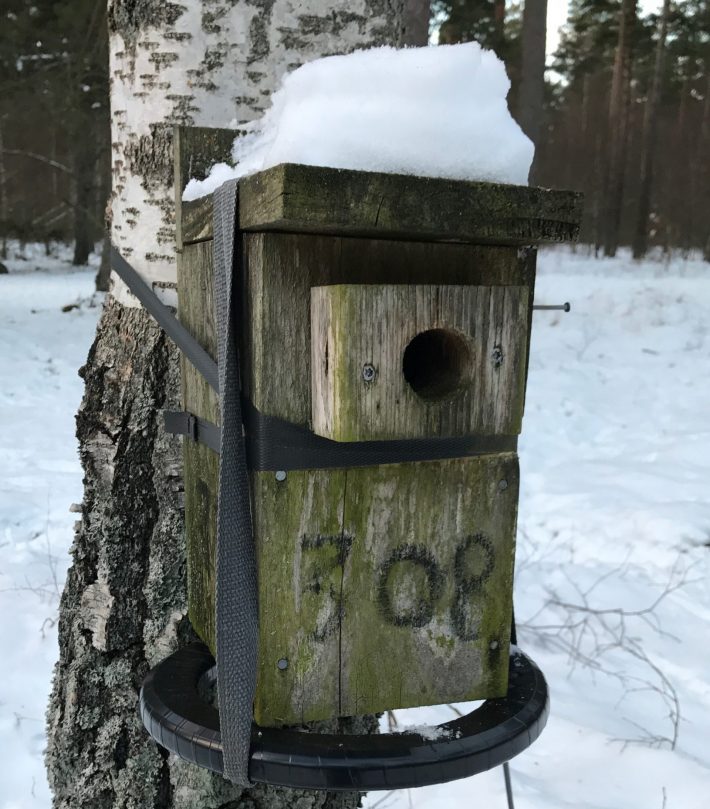Feeding small birds helps them fight infections
Seeds and fat balls do more than just fill small birds’ stomachs. New research from Lund University in Sweden shows that feeding birds during the winter boosts bird health since they do not have to expend as much energy fighting infections.

A small change in body temperature can be fatal for humans. Small birds, meanwhile, lower their body temperature at night by several degrees during the winter. Just like us, birds attempt to save energy when it is cold. But when exposed to infection, the body’s first reaction is to raise its temperature, which clashes with the bird’s simultaneous need to save energy by lowering body temperature.
In their latest paper, published in the British Ecological Society Journal of Animal Ecology, Lund University researchers explored if feeding birds could help them fight infections while conserving energy in winter.
In the forests of Southern Sweden, feeding stations were set up between October 2017 and March 2018, providing great tits with a predictable and constant energy source. Comparing this to the great tits wintering in similar conditions, but reliant on natural resources, the researchers found significant differences in the energy required to fight off infections – but not in the ways they expected.
Hannah Watson, a biologist at Lund University said “We investigated how access to food during winter affected the balancing act between maintaining a low body temperature in order to save energy, and the possibility of raising body temperature in order to fight infection,”
The study shows that birds who were fed during the winter did not need to lower their body temperature as much at night as birds who did not have access to feeding tables. They had gathered enough energy to survive a winter night in spite of maintaining higher body temperatures.

When exposed to a simulated infection, all the birds had similar temperatures during a fever regardless of whether they had access to a steady food supply through a bird feeder or not.
Instead of conserving energy to survive the winter, the birds without access to extra food were forced to use even more energy to raise their body temperature high enough to battle infection.
“We had expected to find that the birds who had access to birdfeeders would have more energy to fight off infection and that as a result, they would exhibit a stronger fever response. Our results, however, show the opposite – birds that did not have access to a reliable source of food had the strongest reaction to infection. This enabled them to reach the same fever temperature as the birds with extra food,” added Hannah Watson.
“A lot of people like to feed the birds. Our study shows that feeding birds can have a positive effect on the capacity of our small birds to fight an infection,”
However, it is not all good news for birders! With the ever-increasing impacts of climate change and human activity, wild animals are being exposed to new pathogens they have never encountered before. Bird feeding tables may be rife with potential infection opportunities, yet can provide birds with the energy needed to fight off these very infections. Bird feeding is therefore somewhat of a double-edged sword.
Researchers, therefore, stress the importance of understanding the many factors that affect animals’ capacity to put up an effective immune response – access to food during winter being one such example.
This article has been adapted from a Lund University press release.
Read the full paper here:
, , & (2023). Thermoregulatory costs of the innate immune response are modulated by winter food availability in a small passerine. Journal of Animal Ecology, 00, 1– 10. https://doi.org/10.1111/1365-2656.13914
Like what we stand for?
Support our mission and help develop the next generation of ecologists by donating to the British Ecological Society.